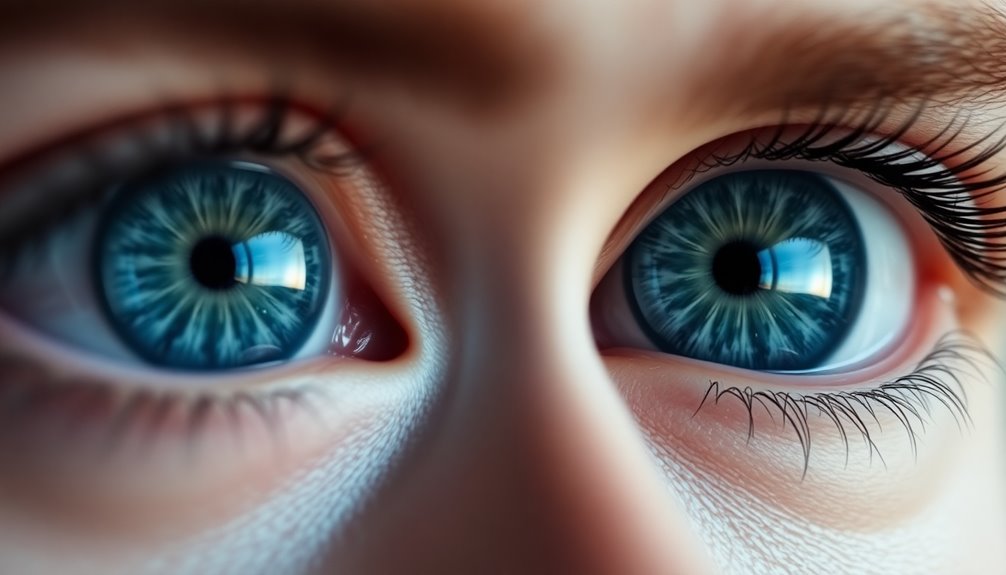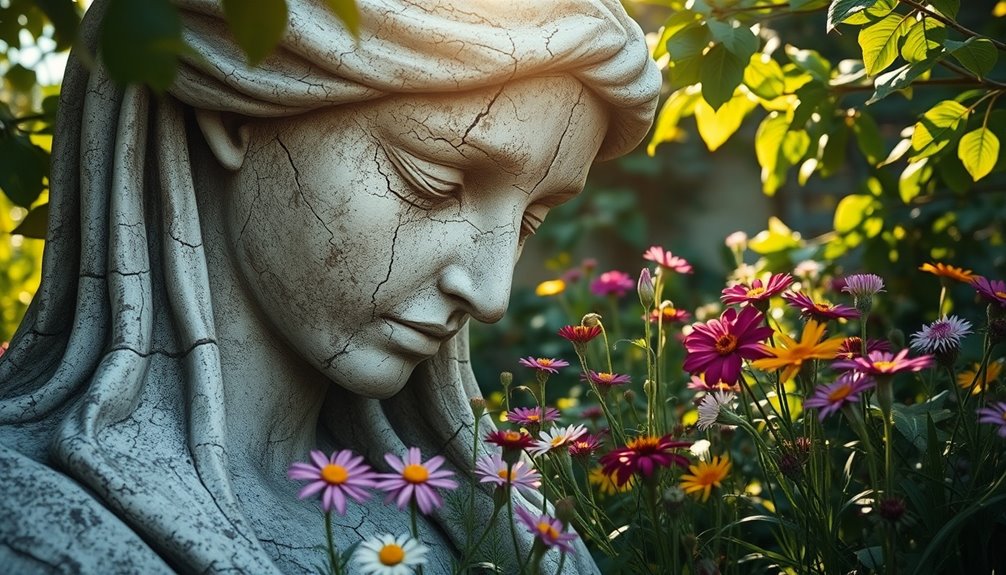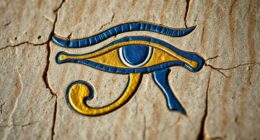Grey blue eyes are a rare and enchanting blend that evokes calmness and clarity. This unique hue, present in only about 1% of people, symbolizes serenity and wisdom. You'll notice their owners often have an introspective and analytical nature, which makes them effective communicators and problem solvers. In many cultures, these eyes are seen as indicators of beauty and spiritual insight. Their calm demeanor inspires trust and fosters deeper connections in relationships. If you're curious about the fascinating blend of science, symbolism, and personality traits linked to grey blue eyes, there's more to explore!
Key Takeaways
- Grey blue eyes combine the calming effect of blue with the wisdom of gray, promoting tranquility and clarity in interactions.
- This eye color reflects a thoughtful personality, often associated with creativity, introspection, and deep emotional insight.
- Rarity (found in only 1% of the population) adds an element of uniqueness and allure to grey blue eyes.
- Cultural interpretations see grey blue eyes as symbols of beauty, purity, and spiritual insight, enhancing their significance across societies.
- Individuals with grey blue eyes often exhibit strong communication skills, fostering deeper connections and understanding in relationships.
Characteristics of Grey Blue Eyes
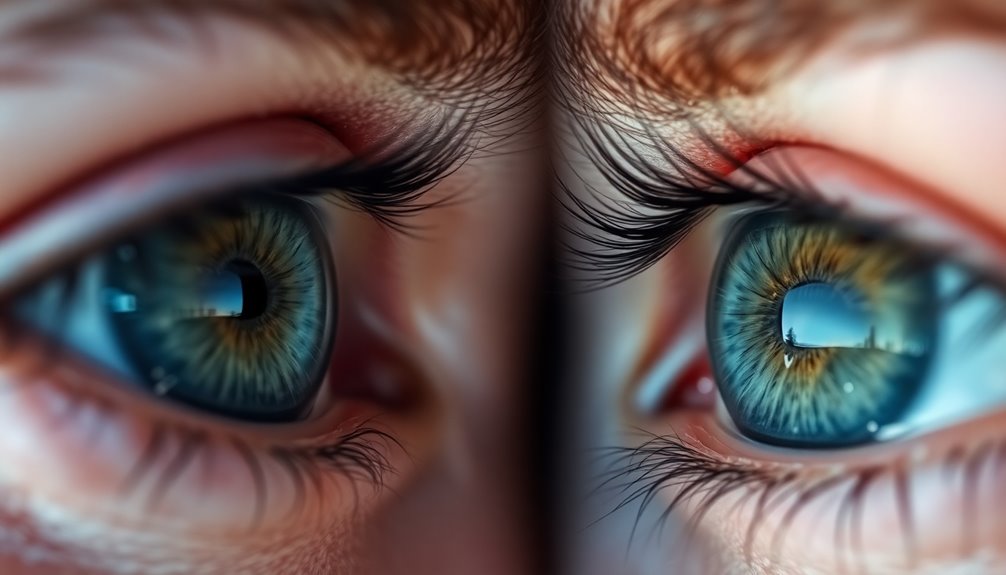
Grey blue eyes possess a mesmerizing blend of colors that creates an enchanting appearance, drawing people in with their unique allure. This unique combination of hues evokes feelings of calmness and serenity, making interactions with you feel peaceful and soothing.
You may notice that your thoughtful and introspective nature reflects the wisdom and creativity inherent in this eye color, allowing others to see the depth of your personality.
With such fascinating grey blue eyes, you likely have strong communication skills, enabling you to express your thoughts and emotions effectively. People might find it easy to connect with you, as your enchanting gaze invites open dialogue.
Your individuality shines through, as grey blue eyes are less common than other colors, serving as a symbol of uniqueness.
Moreover, your eyes can carry an air of mystery, drawing attention and sparking curiosity in those around you. This sophisticated quality enhances your presence, making you memorable in social settings.
Embrace the characteristics of your grey blue eyes, as they not only define your appearance but also reflect the depth of your character and the connections you forge with others.
Emotional Associations With Colors

Colors play a significant role in shaping our emotions and perceptions, with the calming shades of blue often associated with tranquility and the steady hues of gray symbolizing wisdom.
When you think of gray-blue eyes, you likely feel a sense of calmness and clarity. This unique combination reflects a balanced emotional state that can evoke introspection and thoughtfulness.
Research highlights how blue environments promote focus and concentration, positively influencing your emotional well-being. You might notice that individuals with gray-blue eyes often appear calm yet intellectually engaged, further enhancing your perception of their emotional depth.
The psychological associations tied to color are powerful, yet they can vary across cultures. While blue typically brings feelings of peace, gray can represent stability, and together they create a unique emotional landscape.
When you encounter gray-blue hues, you may find yourself responding to these colors with a mix of tranquility and wisdom, fostering a deeper connection to the individuals who possess such eye color.
Ultimately, the emotional associations with gray-blue eyes can enhance your understanding of others and yourself, inviting a richer exploration of your feelings and thoughts.
Cultural Perspectives on Eye Color

Eye color can carry significant cultural meanings that vary widely across different societies. For instance, grey blue eyes are often seen as symbols of calmness and wisdom. This serene demeanor is respected in many cultures, where the depth of character associated with these hues evokes admiration.
| Culture | Perspective on Grey Blue Eyes | Associated Traits |
|---|---|---|
| Eastern | Purity and beauty | Mystery and depth of character |
| Western | Introspective and thoughtful | Allure and complexity |
| Indigenous | Spiritual insight | Connection to the ethereal |
| Global | Rarity and fascination | Unique beauty |
In Eastern cultures, blue eyes signify purity, while grey shades are linked to enigma. In Western literature, characters with grey blue eyes often embody introspection, adding to their allure. Certain indigenous cultures regard these eyes as a sign of spiritual insight, attributing deeper meanings to this unique hue. With only about 1% of the global population possessing grey blue eyes, their rarity amplifies the fascination and beauty found in these mixed hues.
Personality Traits Linked to Grey Blue
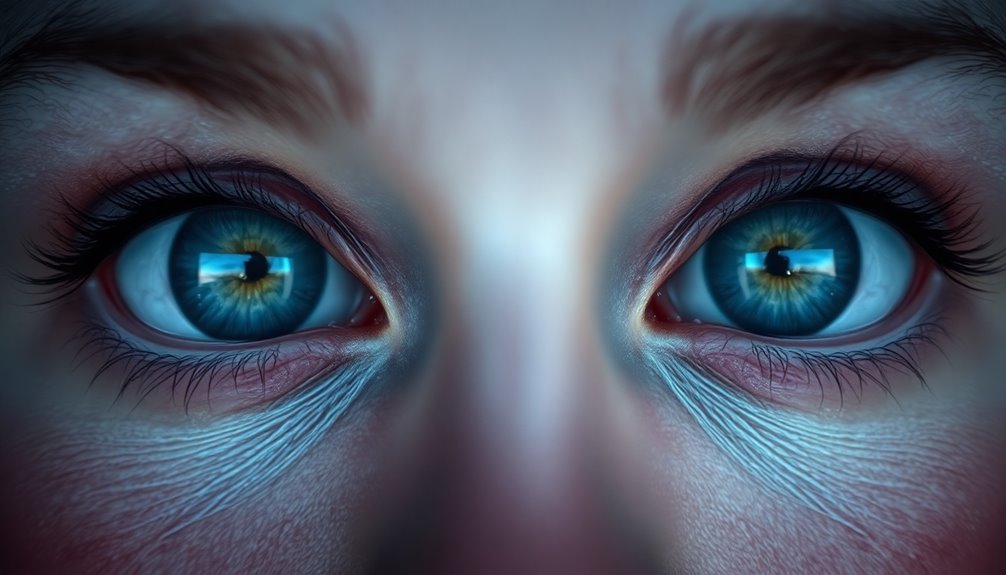
People with grey blue eyes often come across as calm and composed, traits that can inspire trust in those around them. This serene demeanor reflects an analytical mindset, allowing you to excel in problem-solving situations. You likely approach challenges with a logical perspective, making decisions that are well thought out.
Your strong sense of self-control and determination positions you as an effective leader in various environments. People naturally gravitate toward your calm presence, seeking guidance and support. This leadership quality is enhanced by your introspective nature; you take the time to reflect on your thoughts and decisions, ensuring they align with your values.
Additionally, the unique blend of grey and blue hues in your eyes suggests a creative and innovative spirit. You draw inspiration from your collected outlook on life, often thinking outside the box to find solutions.
This creativity sets you apart, allowing you to envision new possibilities and approaches. Essentially, your grey blue eyes signify a combination of calmness, analytical prowess, and an innovative mindset, all of which contribute to your distinct personality and leadership abilities.
The Science Behind Eye Color
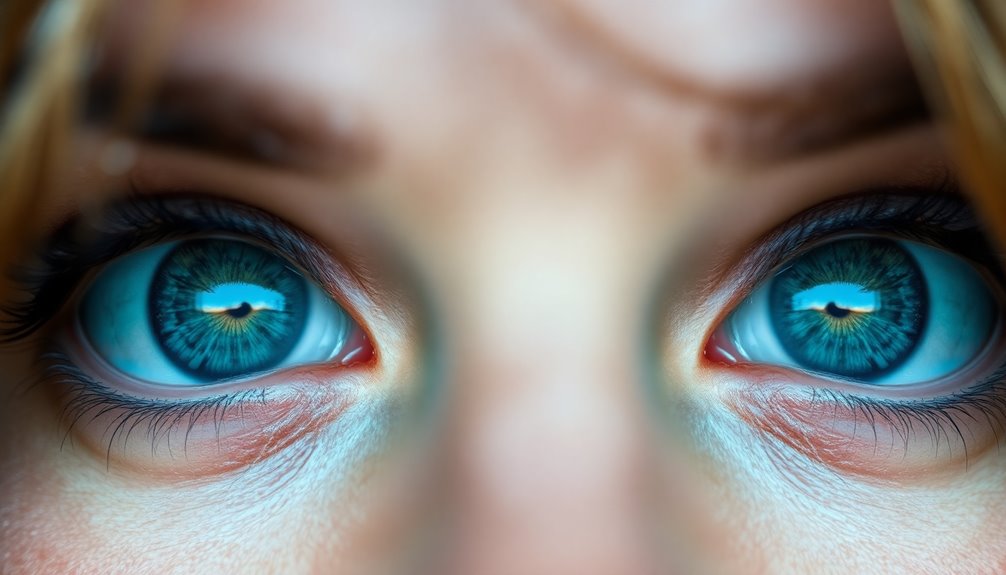
Understanding how eye color forms reveals fascinating insights into genetics and biology. The primary determinant of your eye color is the amount and type of melanin in your iris. Higher levels of melanin lead to darker shades like brown, while lower levels produce lighter colors such as blue and grey.
Grey blue eyes exemplify this interplay, resulting from a unique mixed hue created by both blue and grey pigments. This combination gives them a serene and calm appearance.
Here are some key points about the science behind eye color:
- Eye color is influenced by genetics, with multiple genes at play.
- Variations in melanin levels create diverse colors.
- Grey blue eyes often appear reflective and introspective.
- The unique mixed hue of grey blue eyes can change under different lighting.
- Lower melanin levels are linked to lighter eye colors.
Understanding these aspects can deepen your appreciation for your grey blue eyes or those of others. It's not just a color; it's a reflection of your genetic heritage and the intricate biological processes that shape your appearance.
Symbolism and Spiritual Meanings

While many associate grey blue eyes with calmness and serenity, they also carry deeper symbolic and spiritual meanings. Your grey blue eyes reflect qualities of both tranquility and neutrality, suggesting a remarkable emotional stability. This unique blend symbolizes clarity of thought, making you appear wise and introspective.
In various cultures, your eye color serves as a bridge between the physical and spiritual dimensions. This connection highlights your ability to navigate both worlds, enriching your life experiences. Spiritually, grey blue eyes enhance your communication skills; the blue hue fosters expression and understanding, while grey adds a layer of wisdom.
People often perceive you as possessing depth and mystery. The combination of these colors evokes a complexity that invites thoughtfulness in your interactions. You may find that others are drawn to your calm demeanor and insightful nature, seeking your guidance in times of uncertainty.
Ultimately, your grey blue eyes symbolize more than just a striking appearance; they embody a unique blend of calmness, clarity, and spiritual awareness. This combination empowers you to engage meaningfully with the world around you, enriching both your life and the lives of those you encounter.
Frequently Asked Questions
What Do Blue Gray Eyes Symbolize?
Blue-gray eyes symbolize a blend of calmness and introspective wisdom. When you see this unique color, you might notice a sense of balance between creativity and analytical thinking.
It often reflects your versatile nature and adaptability in various situations, making you approachable yet intriguing. People may perceive you as sensitive and thoughtful, which can lead to strong connections in social and professional circles.
Embrace these qualities; they enhance your unique presence.
What Is the Personality of Someone With Grey Eyes?
You've got an enchanting aura, like a calm lake reflecting the sky.
People often see you as thoughtful and introspective, drawn to your analytical mind.
Your grey eyes suggest you're grounded, exuding a sense of wisdom and stability in social settings.
You may carry a hint of mystery, leaving others intrigued.
With your cool demeanor, you're likely to shine as a leader, approaching challenges with organized clarity and logical insight.
What Does It Mean When Blue Eyes Turn Grey?
When blue eyes turn grey, it often indicates changes in lighting, mood, or health.
You might notice this shift during different times of day or under various emotional states. It's not a permanent change, but rather a temporary reflection of your environment or feelings.
This transformation can also suggest a more introspective or calm demeanor, as grey hues are linked to wisdom and depth, adding an intriguing layer to your eye color.
Are Greyish Blue Eyes Rare?
Absolutely, greyish blue eyes are like rare gems sparkling in a sea of common colors!
You'd find them dazzling in about 8-10% of the population, making them a precious sight.
With their unique blend of hues, they're less frequently seen than traditional blue or brown eyes.
It's all in the genes, and that special combination doesn't pop up often.
Conclusion
In the end, grey blue eyes are like a serene lake reflecting the sky's tranquility, blending calmness with clarity. They not only captivate with their unique hue but also embody a rich tapestry of emotions and personality traits. Whether you see them as a sign of depth or a symbol of balance, these eyes remind us of the beauty in mixed hues and the stories they tell. Embrace the magic they bring to the world!

